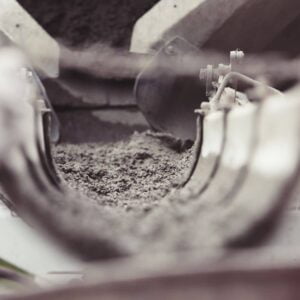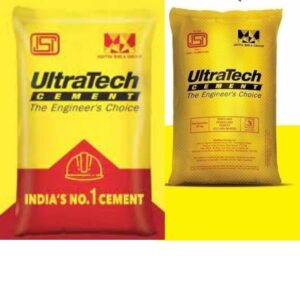Cement price in Kerala
Cement is the most essential construction material used in buildings from the very beginning of construction, Cement price in Kerala is a major factor to consider when you are about to calculate the total construction cost, In all the major cities like Kochi, Calicut, and Trivandrum
Get live estimate for your interior design in 1 minute

cement is sold at slightly different prices according to the stock availability and frequent updating of the cement price in Kerala cities by the manufacturing company
The average price of cement in Kerala varies from Rs. 320 to 410 for premium quality cement per bag of 50 kg
what is cement?
Cement is a hydraulic binder, i.e., an inorganic, non-metallic, finely ground substance which, after mixing with water, sets and hardens as a result of chemical reactions with the mixing water and, after hardening, it retains its strength and stability even underwater.
Invention of cement
The first occurrence of ‘Portland Cement’ came about in the 19th century. In 1824, Joseph Aspdin, a British mason/bricklayer from Leeds, took out a patent on a hydraulic cement that he called “Portland Cement” because of its similarity to Portland stone, a type of building stone that was quarried on the Isle of Portland in Dorset, England, a peninsula in the English Channel.
Raw materials of cement
Now let us discuss the raw materials which are used for the manufacture of cement, their characteristics, and quality requirements. There are three types of raw materials that are used in the production of cement. They are – Types of Raw Materials: 1. Calcareous Materials 2. Argillaceous Materials 3. Corrective Materials
Calcareous Materials
Calcareous materials are calcium-bearing carbonates. • Calcareous materials are • Limestone (95-100%CaCO3) • Marly Limestone (75-85%CaCO3) • Chalk (95-100%CaCO3) • Marble (95-100%CaCO3) • Lime – Sand (85-95%CaCO3) • Shell deposits (85-95% CaCO3) • Limestone is the main raw material used in cement manufacture. • It contains CaO, SiO2, Al2O3, and Fe2O3 as major oxides (components) • Na2O, K2O, Cl, SO3, Mn2O3, Cr2O3, TiO2, etc. as minor oxides (components) •
Limestone is a source of lime (CaO) • The main minerals present in limestone are calcite, aragonite, and dolomite. Calcite (CaCO3) • Crystal System – Hexagonal, Rhombohedral • Common Substitution – Mn, Fe, Mg • Specific Gravity – 2.72 • Dissociation Temperature – Initial – ~, Final – 898oC Aragonite (CaCO3) • Crystal System – Orthorhombic • Common Substitution – Sr, Pb, Zn • Specific Gravity – 2.94 • Dissociation Temperature – Initial – 425oC (Aragonite to Calcite), Final – 898oC Dolomite [CaMg(CO3)2] • Crystal System – Hexagonal, Rhombohedral • Common Substitution – Fe,Mn,Co,Zn • Specific Gravity – 2.86 • Dissociation Temperature – Initial – 725oC (MgCO3), Final – 890oC
Best quality cement brands in Kerala

Ultratech cement
Homebuilders in Kerala prefer ultratech cement mainly for roof slab concreting. With a consolidated capacity of 117.95 Million Tonne Per Annum MPTA, UltraTech is India’s largest manufacturer of grey cement, white cement, and ready-mix concrete (RMC)
Ambuja Cement
Ambuja cements is another popular brand in Kerala cities. Ambuja Cement has a capacity of 29.65 million tonnes production with five integrated cement manufacturing plants and eight cement grinding units across the country.
JSW cement
JSW cement, India’s leading ‘Green Cement’ manufacturer, growing exponentially since Its inception in 2009. JSW has reached a production capacity of 14 MTPA (Million Tonnes Per Annum) with minimum industrial wastage over the past 13 years.
ACC cement
ACC Limited (ACC) is a leading player in the Indian building materials space, with pan-India manufacturing and marketing presence. With 17 cement manufacturing units, over 90 ready mix concrete plants, over 6,600 employees, a vast distribution network of 50,000+ dealers & retailers, and a countrywide spread of sales offices
Malabar cement
Types of cement
Mainly three types of cement products are widely sold in the Kerala market, based on durability, curing time and other properties customers have to choose from the following types
Ordinary portland cement
OPC (commonly referred to as ordinary cement) refers to the hydraulically bonding base material manufactured by mixing Portland cement clinker, 6% ~ 15% of the blended materials, and the appropriate amount of gypsum.
Ordinary Portland cement is the most commonly used for a wide range of applications like ordinary, standard, high strength concretes, masonry and plastering work, precast concrete products for e.g., blocks, pipes, etc., and in specialized works such as precast and prestressed concrete blocks
Portland pozzolana cement
The ash/slag in the required ratio is ground with clinker and gypsum to produce Portland pozzolanic cement (PPC) / Portland slag cement (PSC).
The ground cement is stored in concrete silos and packed in 50 kg bags with electronic packaging machines.
Concrete produced by Portland Pozzolana cement has high ultimate strength, is more durable, resists wet cracking, thermal cracking, and has a high degree of cohesion and workability in concrete and mortar.
Cement price in Kerala prediction
Kerala is one of the states where cement is sold at a higher price than other parts of India, mainly because it depend on other states and cement is transported from the north, cement manufacturing companies in India have been supplying quality cement to Kerala cities in bulk cement carriers mainly by railway
An increase in imported coal and pet coke prices make a big impact on cement prices, in the last months of the year 2021 Kerala builders face a sudden rise in cement prices, In the first quarter of the year 2022 cement prices are expected to increase again
Different grades of cement
33 GRADE CEMENT
The cement grade showed the compressive strength of the cement after 28 days of setting. Cement 33 Grade reached a compressive strength of 33 MPa (megapascals) in 28 days to set.
Initial Strength:
33 classes reached 16 MPa in 3 days, 22 MPa in 7 days.
This cement is used for general civil engineering under normal environmental conditions. It can also be used to install a single-story detached house. Due to its low compressive strength, this cement is generally not used where high-quality concrete is required, namely M-20 and higher. The availability of higher classes of OPC on the market has affected the use of 33 ° OPC and now 43 ° OPC is commonly used for general designs instead of 33 ° OPC.
43 GRADE CEMENT
The cement grade showed the compressive strength of the cement after 28 days of setting. 43 Grade cement reached a compressive strength of 43 MPa(megapascals) during 28 days of setting compared to 53 MPa obtained with 53 Grade cement.
Initial Strength:
43rd class reached 23 MPa in 3 days, 33 MPa in 7 days.
43 grade OPC can be used for the following applications:
›Construction of general civil engineering
›RCC work (best if the concrete class is up to M-30)
›Prefabricated products such as blocks, tiles, pipes, and more
›Asbestos products such as sheets and pipes
›Non-construction work, such as plaster, floors, etc.
53 GRADE CEMENT
The cement grade showed the compressive strength of the cement after 28 days of setting. Cement 53 Grade reached a compressive strength of 53 MPa (megapascals) in 28 days to set.
53 grade cement is used for fast-paced construction whose initial strength is easier to achieve. Cement 53 degrees has a faster setting compared to cement 43 grade
53 Grade OPC can be used for the following applications.
›RCC work (best if the concrete class is M-25 and higher)
›Prefabricated concrete objects, such as pavement blocks, tile building blocks, etc.
›Prestressed concrete parts
›Runway, concrete road, bridge, and more.
looking to buy cement in Kerala, Share your requirement Contact sellers in your city in Kerala
Rights Reserved
-
From raw materials to 8 steps of cement manufacturing, read everything about the production of cement
Raw Mix Proportioning and Raw Mix Design of cement The raw materials mixture is called raw mix or raw meal or kiln feed, The continuous production of high-quality cement is possible only if the raw mix possesses optimum composition, The purpose of calculating the composition of the raw mix is to determine the quantitative proportions…
-
Workability, fractural strength, and compressive strength testing of concreate
Workability of concrete workability is one of the physical parameters of concrete which affects the strength and durability, as well as the cost of labor and appearance of the finished product, workability of concrete is defined as the ease with which concrete can be mixed placed compacted and finished, concrete is said to be workable…
